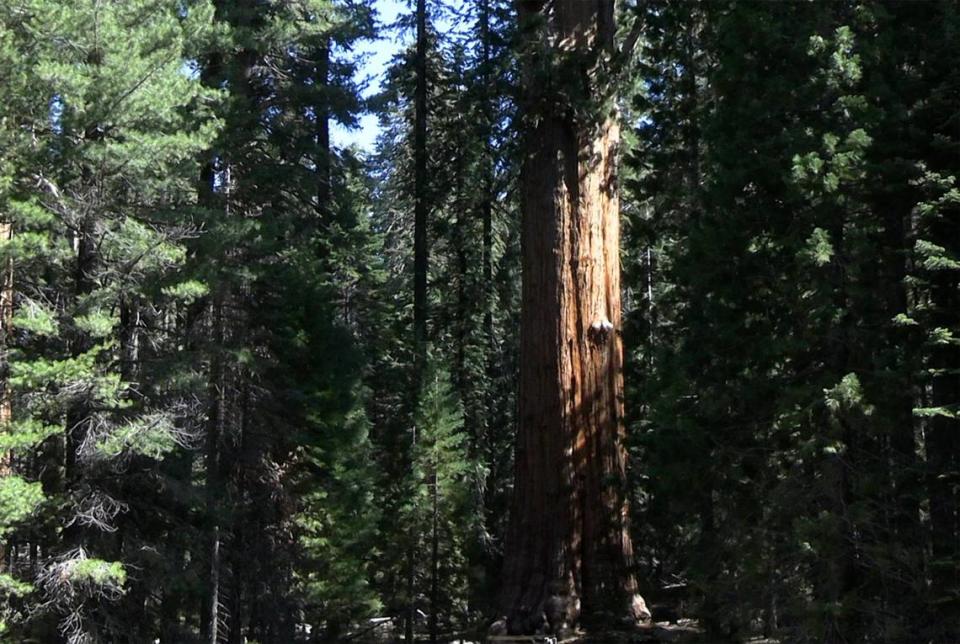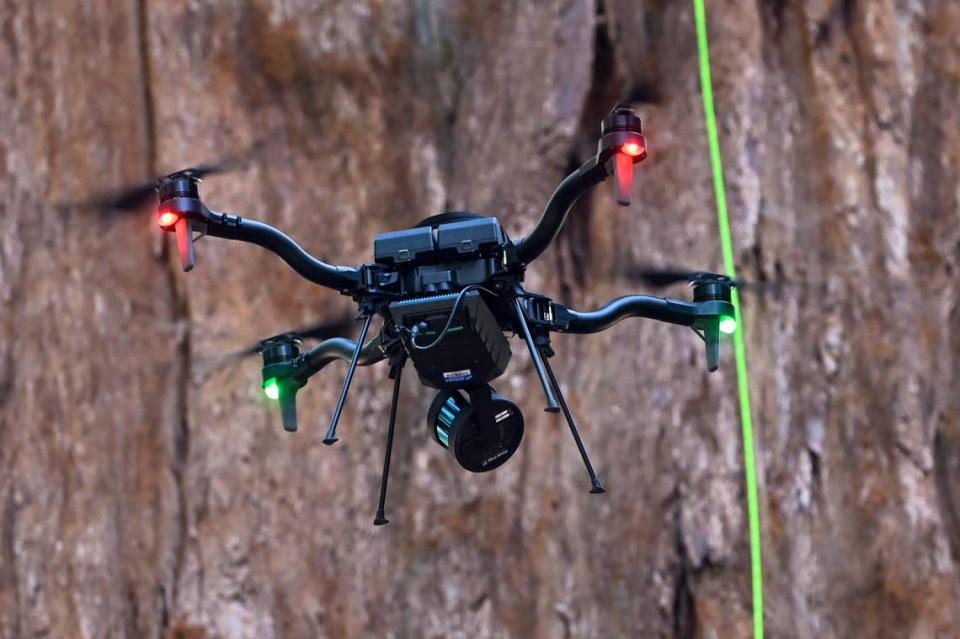Is world’s largest tree healthy? Check in on giant sequoia in California national park
Inside Look is a Fresno Bee series where we take readers behind the scenes at restaurants, new businesses, local landmarks and news stories.
Even among trees within the Giant Forest at Sequoia and Kings Canyon National Park, the General Sherman is a standout.
The giant sequoia is considered the largest known living tree on the planet and also one of the tallest, widest and longest-lived (estimated at 2,000+ years old). It is more than 100 feet around at its base and rises nearly 300 feet. It takes nearly 130 feet before you get to even the first branch.
It’s not ideal for those looking to do a quick check on the tree’s health.
“We’re witnessing an historic event,” Sequoia Parks Conservancy executive director Savannah Boiano said on Tuesday, as researchers set out to conduct a health assessment on the tree.

Researchers were specifically looking for signs of damage from bark beetle, which have proven a threat to the giant sequoia trees and could point toward ongoing affects of drought and climate change among trees of this kind.
The assessment was done using a trio of technologies, from high tech (drones and satellite mapping) to low tech (climbers with ropes ascending the tree’s canopy).
Currently, the only way to confirm the presence of bark beetles in the crown of giant sequoias is to have climbers on ropes in the trees, communicating with those on the ground via handheld radios. This is the first time climbers have been up the General Sherman Tree and researchers will use the data to test whether the beetles can be detected via drone cameras and remote-sensing imagery.
While there was some signs of beetle activity on the tree (there were entrance wounds on branches near the crown) the General Sherman seems to fighting off the pests nicely, said Anthony Ambrose, a forest ecologist and executive director of the nonprofit Ancient Forest Society.
“They don’t seem to be very successful,” he said.
“The adults that are trying to burrow into the bark don’t seem to be making it very deep into the bark.”
The health check was coordinated by the Giant Sequoia Lands Coalition, which is “dedicated to the conservation and stewardship of giant sequoia grove ecosystems” and their protection “from emerging threats associated with climate change and the extended absence of natural, low-severity wildfire processes on the landscape.”
While the trees seem nature-made for survival, they are also vulnerable.
According to the coalition, a set of recent wildfires, beginning with the Castle Fire in 2020 killed (or terminally damaged) 13%-19% of mature sequoias (those over 4 feet diameter at breast height).







